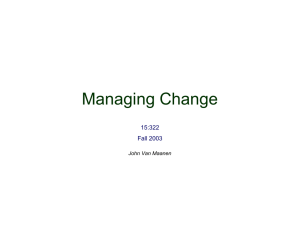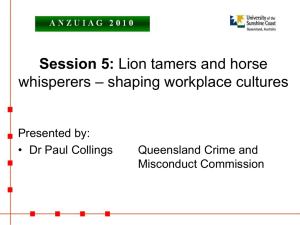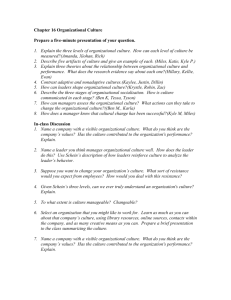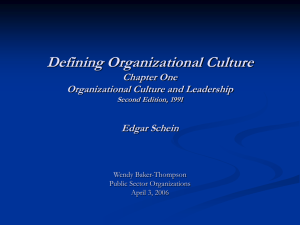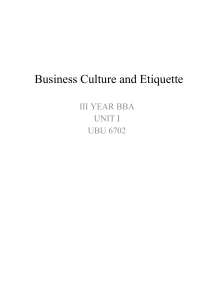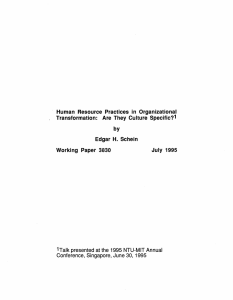Quick_Social_Cultural_Overview
advertisement
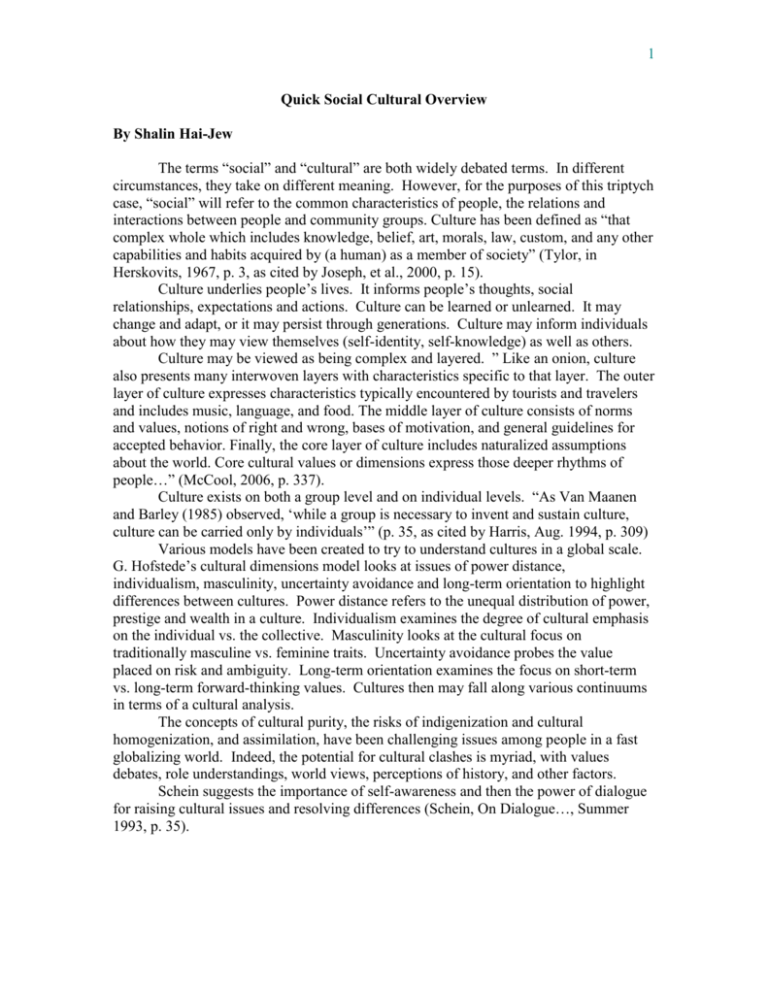
1 Quick Social Cultural Overview By Shalin Hai-Jew The terms “social” and “cultural” are both widely debated terms. In different circumstances, they take on different meaning. However, for the purposes of this triptych case, “social” will refer to the common characteristics of people, the relations and interactions between people and community groups. Culture has been defined as “that complex whole which includes knowledge, belief, art, morals, law, custom, and any other capabilities and habits acquired by (a human) as a member of society” (Tylor, in Herskovits, 1967, p. 3, as cited by Joseph, et al., 2000, p. 15). Culture underlies people’s lives. It informs people’s thoughts, social relationships, expectations and actions. Culture can be learned or unlearned. It may change and adapt, or it may persist through generations. Culture may inform individuals about how they may view themselves (self-identity, self-knowledge) as well as others. Culture may be viewed as being complex and layered. ” Like an onion, culture also presents many interwoven layers with characteristics specific to that layer. The outer layer of culture expresses characteristics typically encountered by tourists and travelers and includes music, language, and food. The middle layer of culture consists of norms and values, notions of right and wrong, bases of motivation, and general guidelines for accepted behavior. Finally, the core layer of culture includes naturalized assumptions about the world. Core cultural values or dimensions express those deeper rhythms of people…” (McCool, 2006, p. 337). Culture exists on both a group level and on individual levels. “As Van Maanen and Barley (1985) observed, ‘while a group is necessary to invent and sustain culture, culture can be carried only by individuals’” (p. 35, as cited by Harris, Aug. 1994, p. 309) Various models have been created to try to understand cultures in a global scale. G. Hofstede’s cultural dimensions model looks at issues of power distance, individualism, masculinity, uncertainty avoidance and long-term orientation to highlight differences between cultures. Power distance refers to the unequal distribution of power, prestige and wealth in a culture. Individualism examines the degree of cultural emphasis on the individual vs. the collective. Masculinity looks at the cultural focus on traditionally masculine vs. feminine traits. Uncertainty avoidance probes the value placed on risk and ambiguity. Long-term orientation examines the focus on short-term vs. long-term forward-thinking values. Cultures then may fall along various continuums in terms of a cultural analysis. The concepts of cultural purity, the risks of indigenization and cultural homogenization, and assimilation, have been challenging issues among people in a fast globalizing world. Indeed, the potential for cultural clashes is myriad, with values debates, role understandings, world views, perceptions of history, and other factors. Schein suggests the importance of self-awareness and then the power of dialogue for raising cultural issues and resolving differences (Schein, On Dialogue…, Summer 1993, p. 35). 2 References Harris, S.G. (1994, Aug.) Organizational culture and individual sensemaking: A schema-based perspective. Organization Science: Vol. 5, No. 3. pp. 309 – 321. Joseph, P.B., Bravmann, S.L., Windschitl, M.A., Mikel, E.R., and Green, N.S. (2000). Cultures of Curriculum. Mahwah: Lawrence Erlbaum Associates, Publishers. 3 – 4, 12, and 17. McCool, M. (2006, Dec.) Adapting e-Learning for Japanese audiences tutorial. IEEE Transactions on Professional Communication: Vol. 49, No. 4. pp. 335 – 345. Schein, E.H. (1993, Apr.) On dialogue, culture, and organizational learning. Reflections: Vol. 4, No. 4. Society for Organizational Learning. pp. 27 – 38.
